-
Na'jas: from the Greek Naias, a water nymph. Collectively they were referred to as the Naiads or Naiades. They were the nymphs of rivers, streams, lakes, marshes, fountains and springs, minor goddesses who attended the assemblies of the gods on Mount Olympus. The genus Najas was published by Carl Linnaeus in 1753.
-
Na'ma: from the Greek nama, "a spring
or stream." There is very little information regarding the etymology or meaning of this name. The genus Nama was published by Carl Linnaeus in 1759 who probably took the name from some Greek mythological source.
-
na'na/na'num/na'nus:
"little," from the Greek nannos, "dwarf."
-
nanteuil'ii: for Baron Edmond Jules Marie Roger de Nanteuil (1857-1951),
who studied Petrorhagia nanteuilii and made many collections of it at Cannes and Agay
for the author Burnat, demonstrating that it did not intergrade with
related species. An article in Boissiera says he stayed at
Cannes from 1880 to 1888 and studied orchids with Paul Bergom. He was a member of the Société botanique de France.
-
napen'sis: of or from the Napa Valley region.
-
na'pus: from the Latin napus, "a kind of turnip," in turn from the Greek napu, "mustard." Gledhill lists several names that begin with 'napi' such as napifolius, "turnip- leaved." He also says napiformis means "with a little turnip-like root." Brassica napus is the only species in the California flora with this epithet and is known as rapeseed.
-
Narcis'sus: named for the handsome son of the river god Cephissus
and the nymph Liriope, who was so entranced by his own beauty that
he spurned all others. He was condemned to fell in love with himself
in such a way that he could not have what he desired, and seeing his
reflection in a pool, that which was only shadow and unreachable,
he was so overcome that he wasted away. The gods then turned him into
the narcissus flower. The genus Narcissus was published by Carl Linnaeus in 1753.
-
Nar'dia: named for Stanislao Nardi (1675/1676-1730), a Florentine professor of moral theology from Vallombroso, famous preacher of the divine gospel, and synodal examiner of the dioceses of Florence, Fiesole and Pistoia. He died in Florence on July 3, 1730, of a polyp in the heart at the age of 54. The genus Nardia was published by Asa Gray in 1821.
-
Nardos'mia: from the Greek nardos, "spikenard,"
which is a fragrant ointment derived from the East Indian plant Nardostachys
jatamansi, and osme, "smell, odor," so perhaps smelling like spikenard. Gledhill agrees, saying "spikenard-scented." The genus Nardosmia was published by Alexandre Henri Gabriel de Cassini in 1825.
-
Narthe'cium: Umberto Quattrocchi's World Dictionary of Plant Names says: "[from] Latin narthecium, 'an ointment-box, a medicine-chest,'
Greek narthex, narthekos, 'rod, giant fennel, casket,'
used by Theophrastus and Plinius for Ferula communis, narthekion 'small splint, small rod.' " Ferula communis is commonly called
the giant fennel, and the Romans called the hollow light rod made
from this plant, used for walking sticks, splints, for stirring boiling
liquids, and for corporal punishment, a ferula. Some say Ferula
communis was also called Narthex, but there appears to be a separate
species named Ferula narthex, commonly called devils dung, so I'm not sure about that. Gledhill refers to Narthecium as little-reed, and mentions that it is an anagram of Anthericum, although they are not in the same family. Stearn says Narthecium is a diminutive of narthex, a rod. The genus Narthecium was published by William Hudson in 1762.
-
nashia'na/nashia'nus: named for Charlotte Eden Nash (Mrs. Hugo Smith) (1899-1982), who collected extensively in the southern Sierra Nevada and the Mojave Desert in the 1930s for Willis Linn Jepson, and throughout Kern County for several decades thereafter, and whose collections are noteworthy for the precise and complete ecological notes that accompanied her specimens. She was born in Minnesota of Norwegian ancestry, and when her parents separated in 1901, her mother took her and her sister Hester to Tennessee, where she began work on a teacher’s certificate. She was told that both she and Charlotte had tuberculosis and her only hope of recovery was to move to California. She obtained a teacher’s certificate in San Francisco and taught first in San Luis Obispo, then at the one-room Joiner School in the hilly, rural area around Woody northeast of Bakersfield, which is where Charlotte grew up. After a brief stay in Los Angeles, they went to San Francisco, where Thea obtained her teacher’s certificate, and on to San Luis Obispo, where she taught school. Hearing that teachers in Kern County were better paid, Thea hired a man with a wagon and team to take the family and their possessions to Bakersfield. There, she went to see Robert L. Stockton, then Superintendent of Schools for Kern County, to ask for a teaching job. Stockton convinced her to take the one- room Joiner School, about thirty miles northeast of Bakersfield in the hills above Woody. And thus began, in 1904, a new life for Thea and her daughters. Charlotte attended the schools where her mother taught, and in the spring of 1917 entered high school in Bakersfield. After graduation, on the urging of her mother and sister — and at a time when few women went to college — Charlotte went to Berkeley to study at the University of California. Charlotte taught for a number of years in Kern and Tulare Counties. In 1935 she married Hugh Smith, from a neighbor ranching family, who ran his own ranch. In 1955 Charlotte and her sister purchased from their mother what Charlotte called “the ranch that had been our life and our love,”—by then 4,300 acres in size. They operated it until 1971, when they in turn sold it. It is difficult to imagine how Charlotte, busy with teaching and ranching, also found time for all her work with native plants. Ernest Twisselmann, in Leaflets of Western Botany, Oct. 1962, would credit Charlotte with possessing “an intimate knowledge of the botany of the Greenhorn Range, [ located in eastern Kern County and Tulare County].” (Taken from an article by Nancy Nies in the Mimulus Memo, newsletter of the Kern County chapter CNPS)
-
Nassel'la: diminutive of the Latin nassa,
"a basket with a narrow neck, a fish basket." The genus Nassella was published by Étienne-Émile Desvaux in 1845.
-
Nastur'tium: from the Latin nasus tortus, meaning "twisted nose," in reference to the effect on the nasal passages of eating the plants. The genus Nasturtium was published by William Townsend Aiton in 1812.
-
nastur'tium-aqua'ticum: nasturtium
from the Latin nasus tortus, "a twisted nose," due
to the plant's pungent taste, and aquaticum pertaining to water.
-
nasu'ta/nasu'tus: large-nosed.
-
na'tans: floating, present active participle of nato, “to swim, float.”
-
Naumburg'ia: named for Samuel Johann Naumburg (1768-1799), a German botanist who specialized in orchids. He was the author of Textbook of Pure Botany According to Principles of Critical Philosophy Applied to Empirical Science (1798). He was employed at the University of Jena. The genus Naumburgia was published in 1802 by Conrad Moench.
-
nauseo'sa/nauseo'sus: nauseating, supposedly from the
odor, from Latin nausea, "seasickness," from Ionic Greek nausia, "seasickness, nausea, disgust," literally "ship-sickness," from naus, "ship." There is no evidence that its meaning was restricted to seasickness.
-
Navarret'ia: named for Francisco Fernandez de Navarrete (1680-1742), a Spanish philospher born in Granada, anatomist and professor of anatomy, naturalist and chamber physician to Felipe V of Spain. He studied medicine in Granada and was responsible for the first meteorological instrumental series of data collected in Spain, which was a set of observations in Granada between December, 1728 and February, 1730 which were included in a handwritten book dated 1732 entitled Cielo y suelo granadino (Sky and soil in Granada). One of the focuses of this work concerned the influence of climate on human health. He moved to Madrid in 1734 to become physician to the King. He was an active member of the Royal Academy of Medicine (founded in 1734) and the Royal Academy of History (founded in 1738). It was believed at the time that illness, epidemics, and public health were related to environmental conditions, especially to the variability of meteorological factors, so medical academies and physicians were the prime movers of early meteorological observations in Spain. This belief continued up until the mid-19th century. An article by Fernando S. Rodrigo in the journal Climate of the Past gives the following: “Navarrete was the author of many works, most of them unedited and kept as manuscripts in the archives of the Spanish Academies of Medicine and History. His attention was focused not only on medicine, but also on physical observations, cosmography, geography, botany, and, in general, all the fields considered to be part of 'natural history.' His main work was Ephemérides barométrico-médicas matritenses (Barometric–medical ephemeris for Madrid), published in Madrid in 1737, which was a set of daily meteorological observations (atmospheric pressure, temperature, wind direction, and qualitative comments on rain, cloudiness, and other meteorological events) taken in Madrid from March to November 1737. Here, the author established the basis of an observational program dedicated to compiling all the meteorological data potentially useful to medical studies not only in Madrid, but also in other Spanish cities.” He died in Madrid in 1742. The genus Navarretia was published by Hipólito Ruiz López and José Antonio Pavón in 1794.
-
neal'leyi: named for the little-known Texas botanist Greenleaf Cilley Nealley (1846-1896), born in Bath, Maine, a specialist on spermatophytes, and a descendent of a Revolutionary War general, and several relatives who were members of Congress. Two uncles of the Nealley name were prominent pioneer horticulturists at Burlington, Iowa. He was a botanical collector in Texas and other states, and gathered forage plants for the US Department of Agriculture. He was the co-author with Samuel Mills Tracy, George C. Nealley, J. Pool and George Vasey of Report of an investigation of the Arid Districts of Texas, New Mexico, Arizona, Nevada and Utah which was released in 1887. He corresponded with George Engelmann and was possibly the first botanist at Texas A&M University (then Texas A&M College). An article in SMU Scholar 1947 by Samuel Wood Geiser, largely based on the research of Dr. Rogers McVaugh published In the July, 1946, issue of Field and Laboratory, provides the following information: “Nealley came from a family of intellectual strength and great respectability. But Nealley's disposition could not harmonize with the cultured environment of his New England home. He therefore left this home at an early age, came west (to Iowa) during the Civil War, and there found conditions of living more accordant with his temperament. Always possessed of a wanderlust, he never married. The years from 1863 to 1882 he spent at Burlington, Iowa. He came thence to Texas where from 1882 to 1896 he lived as a botanical collector, and died obscurely in his fiftieth year. Of Greenleaf's early upbringing and education we know little. He probably studied in his early years at the excellent Bath Academy, located within a short distance from his home. He seems never to have studied at Bowdoin College, and thus broke a family tradition. His mother had died in 1853 when he was seven years old; six years later his father married again. Greenleaf left his home in his seventeenth year to live in Iowa with his namesake-uncle and his aunt, Martha (Adams) Nealley. Since they had no children of their own (they had an adopted daughter), Greenleaf became in a sense their son. It was on the farm and in the nursery of his uncles that Greenleaf spent the years from1863 to 1882. The first dependable information regarding Greenleaf C. Nealley dates from the year 1882, when he was employed (apparently directly by President John Garland James) to make plant collections for Texas A&M College. Nealley's namesake-uncle at Burlington had died a few years previously, and his second uncle, Joseph Bowdoin Nealley was in ill health, necessitating the closing out of the horticultural firm of Nealley Brothers in that year. Greenleaf came to College Station in April. He did not register as a student, nor was he listed as an officer, teacher, or other employee of the institution. The payrolls of the College do not carry his name, and his compensation (totaling $130.00 for the four terms of fourteen weeks each) was evidently paid from some unofficial source outside the College [He was also provided with room and board at the College]. As the early records [before 1886] of the Board of Directors of A&M College of Texas were destroyed in a library fire in 1915, no further information is now obtainable. Nealley seems to have left Texas A&M College in the summer of 1883. Apparently his connection with the College was terminated by President James's departure. The next clear information we possess of his whereabouts in Texas is that in 1886 he called Houston his home [where he lived] from about 1886 to 1891. From 1887 to 1893 he was agent, under Dr. George Vasey of the US Department of Agriculture, to collect grasses and other plants in the more arid parts of Texas.” He apparently moved to San Antonio sometime around 1892 or 1893 and then to San Diego in Duval County, Texas, and the Bath Independent of May 30, 1896, records that this is where he died on May 27, 1896. Dr. Rogers McVaugh was internationally renowned for his expertise in Compositae, Myrtaceae, Campanulaceae, woody Rosaceae, and the flora of Mexico, as well as botanical history and nomenclature, and had several genera of plants named after him.
-
neapolita'num: Neopolitan, of or from Naples (Italy). The taxon in California with this epithet is the naturalized Allium neapolitanum native to the Mediterranean.
-
nebrascen'sis: of or from Nebraska. The only taxon in California with this epithet is Carex nebrascensis.
-
Neck'era: named for Noël Joseph de Necker (1730-1793, a Belgian physician, botanist, mycologist and bryologist. He was the personal physician of the prince of the Palatinate in Mannheim. He was very interested in the study of mosses and wrote several works about them. He also described for the first time the orchid genus Dactylorhiza of the orchid family. The genus Neckera was published by Johann Hedwig in 1801.
-
nees'ii: named for the German botanist, physician, zoologist, and natural
philosopher Christian Gottfried Daniel Nees von Esenbeck (1776-1858).
The following is quoted from Wikipedia: "He was a contemporary
of Goethe and was born within the lifetime of Linnaeus. He described
approximately 7,000 plant species (almost as many as Linnaeus himself).
His last official act as president of the German Academy of Natural
Scientists Leopoldina was to admit Charles Darwin as a member. He
was the author of numerous monographs on botany and zoology. His best-known
works deal with fungi. Nees von Esenbeck was born in a small village
in what is now Odenwaldkreis, Germany. He showed an early interest
in science and after receiving his first education at Darmstadt he
went on to Jena, obtaining his degree in medicine in 1800. He practiced
as a physician for a time, but he had developed a great interest in
botany during his university studies, and eventually he returned to
academia. In 1816 he was accepted into the Leopoldina Academy, which was one
of the most prestigious institutions in Europe. In 1817 he was appointed
professor of botany in Erlangen. Three years later he became professor
of natural history in Bonn, and in 1831 he was appointed to the chair
of botany at the University of Breslau. In 1818 he was elected president
of the Leopoldina Academy. He continued as president of the academy
for the rest of his life. In 1848 he became politically active, and
due to conflicts with the government he eventually in 1851 was
deprived of his professorship and pension at the University of Breslau.
Nees von Esenbeck died essentially penniless in Breslau."
-
neglec'ta: neglected or overlooked. The Latin neglectus is the past participle of neglegere, "to make light of, disregard, be indifferent to, not heed, not trouble oneself about." Castillela affinis ssp. neglecta, Frasera neglecta, Gilia brecciarum ssp. neglecta, Gratiola neglecta, and Phacelia neglecta are all taxa in California with this specific epithet.
-
negun'do: from the native Sanskrit and Bengali nirgundi, the specific name of the plant Vitex negundo and given to Acer negundo because of a supposed similarity
of leaf.
-
Neill'ia: named for Patrick Neill (1776-1851), a Scottish printer, naturalist and horticulturist. Wikipedia says: “He was
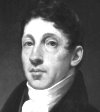 |
|
born in Edinburgh on 25 October, 1776, and spent his life there. [He attended Edinburgh University but did not graduate.] He became the head of the large printing firm of Neill & Co. of Edinburgh, but during the last thirty years of his life he took little active part in its management. Early in his career he devoted his spare time to natural history, especially botany and horticulture. The Wernerian Natural History Society was established in 1808, and in 1809 the Caledonian Horticultural Society was founded. Neill was the first secretary [and a founding member] of both |
societies, holding the latter post for forty years. He was a fellow of the Linnean Society and the Royal Society of Edinburgh, and honorary LLD of Edinburgh University [accounting for the fact that he was often referred to as Dr. Neill]. He served as president of the Botanical Society of Edinburgh in 1842–43.” He was the author of A Tour Through Some of the Islands of Orkney and Shetland (1806) and The Fruit, Flower, and Kitchen Garden. He never married and died after a paralytic stroke at his residence of Canonmills Cottage near Edinburgh. The genus Neillia was published by David Don in 1825. (Photo credit: Art UK)
-
nelsonia'num/nelson'ii: named for self-taught botanist and collector James Carlton Nelson (1867-1944). He was born
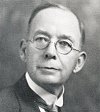 |
|
in Kentucky just two years after the end of the Civil War. His father was a farmer and then a newspaper editor. Nelson received his BA in 1890 and MS in 1893 both from Hanover College, Indiana, then taught at Carthage College in Missouri. He taught and served as principal at schools in Iowa, Illionois and Washington before joining Salem High School in Oregon about 1814. He was associated with Salem High School for the remainder of his life, principal for 15 years, then principal emeritus and registrar. He also was for a time superintendent of schools for the Salem |
school system. While a career educator, his real passion was botany which he indulged evenings, weekends and during summer breaks, collecting plants all over Oregon. He corresponded with renowned botanists both amateur and professional, and maintained a close relationship with Willamette University botany professor Morton Peck. He requested help from James Francis MacBride in identifying specimens he had collected, and was able to help that scholar in return by sending specimens back to Cambridge for MacBride to use. At least 53 specimens collected by MacBride are part of the Gray Herbarium collection today, and the Oregon State University herbarium contains 339 specimens collected by Nelson. ( Orobanche gayana nelsonii) (Photo credit: Willamette Heritage Center)
-
nelson'ii: named for Aven Nelson (1859-1952), a teacher, author, botanical
collector and plant taxonomist. He was
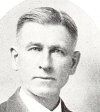 |
|
born in Iowa to Norwegian immigrants
and his given name until he entered primary school was Even. He became
a teacher at the age of 16 and was appointed assistant professor of
natural sciences and instructor in English at Drury College at 24.
He was one of the first faculty members of the University of Wyoming
and became the school's first librarian in 1887. Four years later
he became a botanist at the Agricultural Experiment Station and a
year later received an MA degree from Harvard. He made his first
botanical collecting trip in 1894, collecting some 1,200 species, |
and followed that up with another the next year, both trips in Wyoming.
In 1899 his collection was officially designated the Rocky Mountain
Herbarium by the Board of Trustees of the University of Wyoming, and
he botanized extensively in Yellowstone National Park. He received
a PhD from the University of Denver in 1904. In 1909 he published
New Manual of the Botany of the Central Rocky Mountains (Vascular
Plants) with John Coulter as senior author but completely rewritten
by Nelson, and in 1912 he published Spring Flora of the Intermountain
States. In 1918 he was appointed president of the University
of Wyoming. When he was 77 years old he spent three months in Arizona
with his wife collecting 1,000 specimens and then was elected president
of the Botanical Society of America. The following year he became
the first president of the American Society of Plant Taxonomists.
At the age of 80 he and his wife botanized Mt. McKinley National Park.
He died at the age of 93. ( Anelsonia, Achnatherum nelsonii, Delphinium nelsonii, Draba nelsonii, Phacelia anelsonii, Plagiobothrys nelsonii, Salix chlorophylla var. nelsonii, Senecio nelsonii) (Information from a website of the Rocky
Mountain Herbarium)
-
nel'sonii: named for David Nelson (c.1740?-1789), a British seaman and botanist/collector aboard HMS Bounty. Wikipedia says: “Nothing is known of his ancestry or early life. In 1776, while working as a gardener at Kew Gardens, he accepted a position as a servant to William Bayly, the official astronomer on HMS Resolution [slated to depart for the South Seas on Captain Cook’s 3rd voyage with William Bligh as Sailing Master]. He was promoted to able seaman; however, his real task as arranged between Joseph Banks and Cook was to collect as many botanical specimens as possible for the Royal Gardens. He received a small amount of botanical training and instruction from Banks and William Aiton before embarking. During the voyage, he also made a significant collection of native Hawaiian birds, which is now housed in the British Museum.” After Cook’s death in 1779 and that of Captain Charles Clerke who had succeeded to command of the expedition later that same year, the Resolution and the Discovery completed their near circumnavigation of the globe and arrived back in England by way of Macao, the Sunda Strait and Cape Town. Wikipedia again: “On returning to London in 1780, he worked as a gardener at Kew Gardens for seven years, before Banks arranged his appointment as botanist to Bligh's voyage to Tahiti to obtain breadfruit trees. Nelson had control of the Great Cabin and 1,015 potted breadfruit trees which were intended for the West Indies. He was caught up in the mutiny and, remaining loyal to the captain, was one of the 19 men cast adrift in a small boat. He survived the famous 3,800-mile voyage to Timor, but a few days after arriving in Kupang, died of a fever. Bligh would later name Mount Nelson, Tasmania in his honor.” (Ranunculus nelsonii)
-
nelson'ii: named for Swedish/American botanist and pteridologist Elias Emanuel Nelson (1876-1949). He was born in Hjorted, Sweden, and died in Yakima, Washington. He made botanical collections in Montana and Wyoming and especially in the Rocky Mountains. He is listed on the JSTOR website as a co-collector of Aven Nelson, but I don't think he was related. (Brachythecium nelsonii)
-
nelson'ii/nelsonio'rum: named for Thomas William Nelson, Jr. (1928-2006) and Jane Pratt Nelson
(1939- ) of the Humboldt State University herbarium. An obituary on Legacy.com provides this: "Tom was born in Eureka on August 3, 1928, to Thomas William Nelson, Sr., and Greta Mae (Whitley) Nelson. Tom “Bill” attended local schools, graduating from Fortuna High School in 1946. The summer after graduation he worked for the CDF as a firefighter. He then worked for the Eureka Post Office for approximately 12 years. During this time he served in the US Army in the Korean War. He later went to work for the Eureka Fire Department earning the rank of Captain. Due to the hazardous conditions of this occupation, he decided to return to school. He earned his BA in 1972, and then his MA, with a major in biology, in 1979 from HSU. After graduation, Tom worked for HSU as a research botanist until his retirement from that position. He then served as a volunteer in his wife’s kindergarten classroom. He loved this position and became an important male role model for many of the children. He once again attended classes at HSU, this time to receive the necessary requirements to successfully pass the CPA exam in 1993. He worked as a CPA for several local accounting firms, retiring from Jackson and Eckland in Arcata. In his final years Tom returned to his love of botany, continuing to research and publish his findings of new plant species in major scientific journals. When Jane and Tom bought their home in Eureka in 1964, Tom’s father bought several rose bushes for their yard. This began Tom’s love of gardening, especially roses. His wife remembers returning home from work to find that Tom and his good friend, Jerry Evans, had removed all her shrubs from her front yard to make more room for rose bushes. He could regularly be found in his yard “kissing” his more than 400 rose bushes, some imported from England and Germany. He was an active member of the Humboldt Rose Society and the American Rose Society. He was a consulting rosarian, as well as a horticultural rose judge. He was invited to judge in many rose shows throughout the nation and received numerous awards including District Outstanding Judge in 1990, District Silver Honor Medal in 1994, and the Bronze Medal, Humboldt Rose Society in 1994. He was an excellent rosarian winning top awards for his own roses. In early October, Tom received the prestigious award of Master Consulting Rosarian at the Fall District Conference and Rose Show in San Ramon, CA. Tom will be greatly missed by all who knew him. His sense of humor; love of gardening; very deep ethical values; love of lifelong learning, especially in math and science; and love of his family have left an unforgettable legacy." (Silene nelsonii for Thomas, Eriogonum umbellatum var. nelsoniorum for both)
-
Neltu'ma: a generic epithet that has replaced Prosopis in California. For the etymology, the authors state: "Possibly derived from the common name Mulla Thumma in the Dravidian language Teluga in the Indian states of Andhra Pradesh and Telangana, where Neltuma juliflora is introduced." The genus Neltuma was originally published by Constantine Samuel Rafinesque in 1838, and the change from Prosopis to Neltuma is described in an article in the journal PhytoKeys, 205: 147–189 (2022) entitled "Disintegration of the genus Prosopis L." by Colin Hughes, Jens Ringelberg, Gwilym Lewis and Santiago Catalano)
-
Nelum'bo: from nelumbu, a Sinhalese (Sri Lankan) name for
the lotus plant. The genus Nelumbo was published by Michel Adanson in 1763.
-
Nemacau'lis: from the Greek nema, "a thread," and caulis, "stem," for the slender stems and branches.
The genus Nemacaulis was published by Thomas Nuttall in 1848.
-
nema'clada/Nema'cladus: from the Greek nemos,
"thread," and clados, "branch," thus meaning
having "thread-like branches." The first described species, Nemacladus ramosissimus, was published in 1842 by Thomas Nuttall, and was so named because of its very slender pedicels.
-
Nemo'phila: from the Greek nemos,
"a glade," and phileo, "to love," meaning
that it has "an affinity for groves." Nemophila was published by Thomas Nuttall in 1822.
-
nemora'lis: growing in groves or woods.
-
nemoro'sa: same as nemoralis above.
-
neoglandulo'sum: apparently the name Rhododendron glandulosum was already in existence, so when Ledum glandulosum was made
part of genus Rhododendron, it had to be named something other
than that so 'neo' was added.
-
Neoholmgren'ia: derived from neo for 'new' and in reference to genus Holmgrenia for Arthur Herman Holmgren (1912-1992), his son Noel Herman Holmgren (1937- ), a professor at Oregon State University and Lehman College, and curator of the New York Botanical Garden, and daughter-in-law Patricia Kern Holmgren (1940- ), director of the herbarium of the N.Y. Botanical Garden, for their contribution to the botanical knowledge of the western United States. Arthur Herman Holmgren was a recognized mentor, educator, researcher, authority, on western US flora, plant explorer, environmentalist, conservationist, gardener, and music aficionado. He was professor of botany and curator of the Intermountain Herbarium, Utah State University, 1943-1978, and a teacher at the Teton Science School in the 1980s. An obituary in the Deseret News offers this picture: "He was born in Midvale, Utah, to Axel Herman and Anna Carlson Holmgren. On May 10, 1934, he married Doris Edstrom. Prof. Holmgren graduated from Murray High School, where he served as student body president in his senior year. He received his BA degree from the University of Utah in 1936 and his MS degree from Utah State Agricultural College (USU) in 1942. Additional graduate work was done at University of California at Berkeley. Prior to joining the staff of Utah State University, Prof. Holmgren worked for the Desert Range Experiment Station near Milford, Utah, 1936-37, served as Chief-of-Party of the Range and Economic Survey in Elko County, Nevada, 1937-41, and worked at the Squaw Butte Experiment Station, Harney County, Oregon (Oregon State University and Bureau of Land Management), 1942-43. He served as professor of botany and curator of the Intermountain Herbarium, Utah State University, from 1943 until his retirement in 1978. In the 1980s he taught at the Teton Science School, Jackson Hole, Wyoming. He was the recipient of many honors, including Outstanding Educator in America, 1972, Robin's Award for Professor of the Year, 1975. the Faculty Honors Lecture, 1977, a special award of merit by the State Arboretum of Utah, University of Utah, for outstanding achievements as an honored teacher, a research botanist, writer, and chronicler of the unique plants of Utah in the Intermountain Flora, 1983, and the Jim Bridger Award, 1988. Music and gardening were a major part of his life. He played violin in the University of Utah and Utah State University symphonies and served for many years as a leader in the Cache Valley Civic Music Association and Utah State's Lyceum Committee. He was an avid gardener, and his gardens were unique for his selection of native species and unusual horticultural varieties, and were a favorite showcase for local gardeners and garden clubs. He was active in many societies, including the American Institute of Biological Science, the American Rock Garden Society, the American Society of Plant Taxonomists, the Botanical Society of America, the California Native Plant Society, the Northern Nevada Native Plant Society, the Sierra Club, Sigma Xi, the Southern Utah Wilderness Alliance, the Utah Native Plant Society and the Utah Academy of Sciences, Arts, and Letters." He died in Logan, Utah. Additional information under entry for Holmgrenanthe. The genus Neoholmgrenia was published by Warren Lambert Wagner and Peter C. Hoch in 2009.
-
Neokoch'ia: derived from neo for 'new' and in reference to genus Kochia which was named for German physician and botanist Wilhelm Daniel Josef Koch (1771-1849), see Kochia. The genus Neokochia was published by Ge Lin(g) Chu and Stewart C. Sanderson in 2008.
-
Neolloyd'ia: named for Francis Ernest Lloyd (1868-1947), a botanist, professor and author. He was born in Manches-
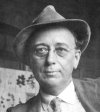 |
|
ter, England, and came to Philadelphia with his parents at an early age. He was at times a cowpuncher, a dentist’s assistant, and an apprentice watchmaker. He decided to train for the ministry but when he entered Princeton his interests turned to biology. He received an AB (1891) and an AM (1895) degree at Princeton, followed by further education at Munich and Bonn in Germany, and at Masaryk University in Brno in the Czech Republic. He was a man of wide knowledge and a plant physiologist by choice. He was involved in the founding and building of the |
American Society of Plant Physiologists and served as its third president from 1926 to 1927. He also was on the first editorial board of the journal Plant Physiology. His teaching career began in 1901 at Williams College, followed by several years at Pacific University in Oregon as an instructor of biology and geology, and nine years at Teacher’s College of Columbia University. While at Columbia he wrote a book on the teaching of biology and married fellow teacher Mary Elizabeth Hart. In addition to his book on biology, he also wrote papers on plant anatomy, morphology and embryology. From this point he concentrated on research especially on physiology, and worked at the Desert Laboratory of the Carnegie Institution of Washington. He conducted further research on guayule, a rubber plant of the Chihuahuan Desert, wrote a monograph about it, and worked for more than 20 years for the US Rubber Company. He spent a few years at the Alabama Polytechnic Institute doing research on the physiology of the cell. In 1912 he began the most important phase of his career when he went to McGill University as professor of botany and remained there until his retirement in 1934. He worked on the trapping mechanisms of carnivorous plants and made a trip to Australia to observe species that were not otherwise obtainable. After leaving McGill, he settled at Carmel-by-the-Sea and worked on his book The Carnivorous Plants which was published in 1942. He was for a time president of the Royal Society of Canada and received an honorary DSc from the University of Wales. He is considered one of the foremost plant physiologists of his time, a dedicated, kindly and charming man given to story-telling anf the utterances of drolleries. He died at Carmel-by-the-Sea. The genus Neolloydia was published by Nathaniel Lord Britton and Joseph Nelson Rose in 1922.
-
neomexica'na/neomexica'num: of or from New
Mexico.
-
Neomoli'na: named for Juan Ignácio Molina González (1740-1829), Chilean priest, naturalist, geographer and
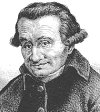 |
|
chronicler, also known as Abbé (Abate, Abbott) Molina and in Italy as Giovanni Ignazio Molina. He was born in Villa Alegre, Chile. He was skilled in languages, Greek, Latin, Italian, French and Spanish, and was accepted by the Jesuits at the age of fifteen and educated at their college in Concepción. The Jesuit order was expelled from the Kingdom of Spain and he was forced to leave Chile in 1768. His exile from his native land scarred his life forever, particularly since he was never again to see his mother. He settled in Bologna, Italy, where due to his linguistic abilities he was |
awarded the position of chair of Greek language at the University of Bologna and that of natural history in the Institute of the same city. He produced two works, the Compendium della storia geografica, naturale e civile del regno del Cile in 1776, and the Saggio della storia civile del Cile in 1787, and gained a high reputation as a historian and geographer. The latter work described for the first time the natural history of Chile and introduced many species native to that country to science. In 1803 he became a professor of natural sciences and later a member of the Royal Italian Institute of Sciences, Letters and Arts. Ruiz and Pavón dedicated to him the plant genus Molina, later considered a subgenus of Baccharis by Wilhelm Heering (Reiche 1902), and recently recreated as Neomolina by F.H. Hellwig and ranked as a genus. His last work before passing away was Memoirs of Natural History published in 1829. His death, which took place in Bologna at the age of 89, caused a great impact on the European intellectual media. A species of Chilean lizard, Liolaemus molinai, was named in his honor. The genus Molina was published by Antonio José Cavanilles in 1790 and the genus Neomolina by Frank H. Hellwig in 1993.
-
neonuttallia'na: named for amateur botanist Lawrence William Nuttall (1857-1933), no apparent relation to Thomas Nuttall. An article in the West Virginia Encyclopedia provides this: “[He] collected plant specimens, including fungi, during the late 1800s and early 1900s. He was born near Philipsburg, Pennsylvania [to the English-born John Nuttall and his wife Elizabeth]. In 1878, after attending the Perryville (Pennsylvania) Academy, he moved to Nuttallburg [West Virginia], in the New River Gorge in Fayette County to join his father, the pioneer coal operator John Nuttall. When he wasn’t working he studied plants, and in just seven years collected about 1,000 species of flowering plants, many of which were named after him, and hundreds of fungi. At least 108 of the fungi species were new to science. Many of Nuttall’s specimens were sent to various authorities for identification, one of whom was botanist C. F. Millspaugh of West Virginia University, After collaborating for several years, they jointly published Flora of West Virginia in 1896, not to be confused with the later book of the same name by P. D. Strausbaugh and Earl L. Core. In succeeding years, Nuttall continued collecting in West Virginia and other areas of the nation, contributing to publications including Flora of the Southeastern States, North American Uredinales, and Flora of Santa Catalina Island. In 1927, just before moving to San Diego, Nuttall donated his plant collection to the WVU Herbarium. This collection included thousands of seed plants and fern specimens, but was particularly valuable for the more than 1,400 species of fungi, most of which were first described from Fayette County.” With the help of his three brothers-in-law, Lawrence had managed and operated the Nuttallburg mines, even staying in New River Gorge with his brother-in-law, Jackson Taylor, after the others moved back to Pennsylvania. His son recalls that “[My father] went out every evening to gather plants and spent all of his spare moments in identifying his finds, among which were a couple of species that he could not identify. . . . they were a new discovery. . . .” Obviously interested in plants from a very early age, he is said to have collected his first two plant specimens in 1866, at only nine years old. In 1884 he married Katherine DuBree of Pittsburgh, and they had one surviving son, John. In 1894 Millspaugh was made curator of botany at the Field Museums of Natural History in Chicago and in 1919 he wrote to Nuttall asking if he would be interested in investigating the flora of Santa Catalina Island. Nuttall accepted, and he began collecting on Santa Catalina Island on April 27, 1920 and continued until October; then intermittently until February 10, 1921. Although Isplaedia says he was born in West Virginia, he was actually born near Philipsburg, Pennsylvania, and died in San Diego. The town of Nuttallburg is now considered a ghost town and is part of the New River Gorge Naytional Park and Preserve.
-
neopolita'num: of or from Naples.
-
Neoschroe'tera: named for Carl Joseph Schröter (1855-1939), a Swiss botanist, traveller and professor of systematic
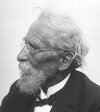 |
|
botany born in Esslingen am Neckar, Germany, who studied natural sciences at Eidgenössische Polytechnische Schule (ETH) from 1874, where one of his early influences was geologist Albert Heim. Following his habilitation (the qualification to conduct self-contained university teaching which is the key for access to a professorship in many European countries) in 1878, he worked as an assistant to botanist Carl Eduard Cramer. In 1880 he received a doctorate from the University of Zurich, and in 1883 became a professor of botany at ETH Zurich, a position he kept until 1926. He |
was a pioneer in the fields of phytogeography and phytosociology, and conducted research on paleobotany and morphology. He introduced the concept of ‘autecology’ to explain the relationship of an individual plant with its external environment, and ‘synecology’ to express relationships between plant communities and external influences. He was the co-author with Charles Flahaut of Rapport sur la nomenclature phytogéographique (Reports on phytogeographical nomenclature), with Friedrich Gottlieb Stebler of Die besten Futterpflanzen, a work involving forage crop cultivation and economics, and with Johann Jakob Früh of a book on Swiss moorlands entitled Die Moore der Schweiz: mit Berücksichtigung der gesamten Moorfrage. He was also the author of The Plant Life of the Alps, and was a member of numerous national and international scientific societies. He was a pioneer in nature conservation from 1906 and sat in the Swiss Conservation Commission. He received numerous honorary doctorates and was one of the founders of the Swiss National Park. The genus Neoschroetera was published by John Isaac Briquet in 1926.
-
Neostap'fia: derived from neo for 'new' and in reference to genus Stapfia after the Austrian-born botanist Otto Stapf (1857-1933).
He was trained in Vienna and moved to the Royal Botanic Gardens at
Kew in 1890. He was keeper of the herbarium from 1909 to 1920. He
was awarded the Linnean Medal in 1927. The genus Neostapfia was published by Joseph Burtt Davy in 1899. More information under Stapfia.
-
neoter'icus: new, modern, from late Latin neotericus, which also means "recent," in turn from late Greek neoterikos and ultimately from Greek neos, meaning "new" or "young."
-
Neot'tia: from Greek neossia for "bird's nest," likely a reference to the tangled root structure of orchids in this genus, which was published by Jean Étienne Guettard in 1754.
-
Neowashington'ia: named for George Washington (1732-1799), first president of the United States.
-
Nepe'ta: the ancient Latin name of the aromatic plant catnip. The genus Nepeta was published by Carl Linnaeus in 1753.
-
nephrophyl'la: from the Greek nephros, "kidney,"
and phyllon, "leaf," thus with kidney-shaped leaves.
-
Ner'ium: a classical Greek name. This was a Greek name used by Dioscorides for oleander. Wikipedia says "The genus name Nerium is the Latinized form of the ancient Greek name for the plant nerion, which is in turn derived from the Greek for water, neros, because of the natural habitat of the oleander along rivers and streams. Nerium oleander is the only taxon in California. The genus Nerium was published by Carl Linnaeus in 1753.
-
nervi'na: probably the same as the following entry.
-
nervo'sa: having distinct veins or nerves, usually the leaves.
-
nervulo'sa/nervulo'sum: same approximate meaning as previous entry.
-
nesiot'ica/nesiot'icus: from the Greek nesos, "island,"
and the - ica suffix indicating "possession or belonging
to," thus belonging to or from an island.
-
Nesto'tus: anagram of generic name Stenotus. The genus Nestotus was published by Roland P. Roberts, Lowell Edward Urbatsch and Kurt Maximilian Neubig in 2005.
-
neuropet'ala: with veined or nerved petals.
-
neurophor'a: bearing veins or nerves.
-
nevaden'se/nevaden'sis:
of or from Nevada or the Sierra Nevadas.
-
nevadinco'la: from Nevada and the Latin incola meaning "an
inhabitant," hence an inhabitant of Nevada.
-
nev'ii/Nevius'ia: named for the Reverend Reuben Denton Nevius (1827-1913), a preacher who felt called to the west
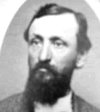 |
|
in the days of its early settlement and development and helped establish churches in eastern Oregon, in Washington and in Idaho. He also was an avid botanist who passed on that knowledge to anyone who would listen, a dedicated builder of churches, and a gifted teacher. He was born in Ovid, New York and received his divinity degree from Union College in Schenectady in 1849. He went to Columbus, Georgia, for further religious study in 1850, then served as an Episcopal priest in Alabama, moving from Wetumpka to Tuscaloosa in 1855. Around this time his interest in |
botany became intense and he began a four-decade long correspondence with Asa Gray at Harvard. He sent him samples of plants and searched out others at Gray’s request. Although a northerner he remained in the South during the war, then became rector of All Saints’ Church in Oil City, Pennsylvania. After his marriage, the couple moved to Mobile, Alabama, where he was appointed as rector of St. John’s Episcopal Church. Regrettably his wife died of yellow fever the following year. Wikipedia adds: “In 1872, Nevius was given the ecclesiastical responsibility for a wide circuit in eastern Oregon, where he established seven new congregations. His circuit-riding responsibilities later included eastern Washington and Idaho. He directed the building of many new churches, some of which are still standing.” Following his death, his body was transported back to New York where he was buried in the Ovid town cemetary. He had two children both born and died in 1869. Asa Gray named the plant genus Neviusia in his honor. There has been a controversy over assigning credit for the discovery of this genus which was published by Asa Gray in 1858.
-
nevin'ii: named for the Reverend Joseph Cook Nevin (1835-1913), a Pennsylvania-born missionary and botanist and fellow of the Southern California Academy of Sciences, a brilliant linguist and botanical collector. On behalf of the Board of Foreign Missions of the Associate Presbyterian Church, Nevin was sent with his wife Amanda Beggs Nevin to work in China and remained in Guangzhou from 1860 to 1870. After a stay in the USA he returned to China with his second wife, Mary Catherine McCague Nevins, and was there until 1877. He collected plants in China, and at some point after that he moved to Los Angeles where he continued plant collecting. He visited Santa Catalina Island in 1884 with William Scrugham Lyon, and they were among the island’s first botanical collectors. They collected again together in 1885 on San Clemente Island. The specimens they collected are located at the UC Berkeley herbarium and at the Pomona Herbarium at Rancho Santa Ana.
-
new'berryi/newber'ryi: named for John Strong Newberry (1822-1892), an American physician, geologist, paleontol-
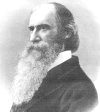 |
|
ogist and botanist who collected in California on the Williamson Railroad Survey. He was born at Windsor, Connecticut and spent most of his early life in the Western Reserve of Ohio which was an area of northeastern Ohio that was claimed first by the Colony and then by the state of Connecticut and had been granted to the Colony under the terms of its charter by King Charles II. He graduated from Western Reserve College in 1846 and from Cleveland Medical School in 1848. Following two years of study in medicine and paleontology in Paris, he began a medical practice in Cleveland. In |
1855 the War Department sent an exploring expedition under Lieutenant Williamson to survey the country between San Francisco and the Columbia River, and he joined it. Subsequent to that expedition, he joined Joseph Ives as a geologist in an exploration of the Colorado River, and then served as naturalist on an expedition to southwestern Colorado, Utah, Arizona and New Mexico. He was the first geologist known to visit the Grand Canyon. He was also a professor at Columbian University (now George Washington University). After being elected a member of the United States Sanitary Commission in 1861 and inspecting troops at Cairo, Illinois, he resigned from the Army and became secretary of the Western Department of the Sanitary Commission, and for the next five years was occupied with organizing the work of the commission, distributing hospital stores, and providing food and shelter to current and former soldiers. In 1866 he was offered the chair of geology and paleontology in the School of Mines, Columbia College (now Columbia University), which he accepted and held for 24 years. While at this institution he compiled a museum of over 100,000 specimens of geologic and paleontologic significance, being one of the best collections to be found anywhere. Other positions which he held included director of the Ohio Geological Survey, member of the Illinois Geological Survey, president of the American Association for the Advancement of Science, president of the New York Academy of Sciences, president of the Torrey Botanical Club, one of the judges at the 1876 World’s Fair in Philadelphia, associate fellow of the American Academy of Arts and Sciences, and one of the founding organizers of the Geological Society of America. He died at New Haven.
-
newlonia'na: named for Lulu Marie Newlon (Mrs. George Burr Upton) (1882-1950). Her mother was from Michigan, her father from Pennsylvania, and she was born in Michigan. She died of leukemia in Los Angeles. One source referred to her as Dr. Newlon. For several years from 1919 to 1922 she worked on Willis Linn Jepson's Flora of California. David Hollombe also added that "Lulu Newlon drew the illustrations in plates 8 & 9 of Adele Grant's 1924 A Monograph of the Genus Mimulus." There is almost no information about her online.
-
Neyraud'ia: named for Auguste Adolphe Marc Reynaud (1804-1887), French naval surgeon and naturalist. Wikipedia says: “As a naval surgeon, he obtained a ‘third-class’ ranking in 1821. Beginning in 1846, he served as chief surgeon, and in 1858 was named inspector general of the Bureau of Medicine and Surgery. During the Franco-Prussian War he was tasked with the organization of naval ambulance services. He took part in several sea voyages during his career, most notably in 1827/28 aboard the Chevrette, from which he collected zoological specimens during trips to India, Burma and the Dutch East Indies. In 1836 he became a correspondent member of the Académie Nationale de Médecine." In 1847 chloroform anesthesia was introduced to clinical practice and was used widely by the French Army during the Crimean campaign where deaths attributed to it were estimated to be 1/12,000 or 1/13,000. As a Marine surgeon in charge of the Health Service and Military Hospital of the Port of Brest, Reynaud invented an anesthesia cone, ancestor of our current masks, designed to facilitate quantified inhalation of chloroform. The genus Neyraudia was published by Joseph Dalton Hooker in 1896/1897, and is an anagram of Reynaudia, a grass genus named for Reynaud by Karl Sigismund Kunth in 1829. Neyraudia reynaudiana is one of the few examples of both species and genus epithets being named for the same person.
-
nicaeen'sis: both Stearn and Gledhill say of or from Nice (formerly Nicaea
Maritima), southern France, or Iznik (formerly Nicaea), Turkey, however the authors of Euphorbia nicaeensis said "We name this species after the Adriatic Sea, on both sides of which it is distributed." The Empire of Nicaea was a Byzantine rump state in existence from 1204 to 1261 that stretched from the Aegean to the Black Sea to the east of the Sea of Marmara. Nicaeensis is a fairly common epithet attached to quite a few genera.
-
Nican'dra: named for Nicander, a Greek poet of Colophon, Asia Minor. He was a physician and grammarian who
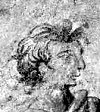 |
|
wrote on the subject of plants around 100 BC, notably in his poem Alexipharmaca, which treats of poisons and their antidotes. He was born in Claros near Colophon in modern-day Turkey. Wikipedia says: “He wrote a number of works both in prose and verse, of which two survive complete. The longest, Theriaca, is a hexameter poem on the nature of venomous animals and the wounds which they inflict. The other, Alexipharmaca, consists of 630 hexameters treating of poisons and their antidotes. Nicander's main source for medical information was the physician |
Apollodorus of Egypt. Among his lost works, Heteroeumena was a mythological epic, used by Ovid in the Metamorphoses and epitomized by Antoninus Liberalis; Georgica, of which considerable fragments survive, and perhaps imitated by Virgil. The works of Nicander were praised by Cicero ( De oratore, i. 16), imitated by Ovid and Lucan, and frequently quoted by Pliny and other writers ( e.g. Tertullian in De Scorpiace, I, 1).” Encyclopedia Britannica says: “Nicander’s reputation does not seem justified; his works, as Plutarch says in De audiendis poetis, have nothing poetic about them except the metre, and the style is bombastic and obscure. However, they contain some interesting information on the ancient approach to the subjects treated.” Almost nothing is known about his life. He may have died in Alexandria, Egypt. The genus Nicandra was published by Michel Adanson in 1763.
-
nicholson'ii: named for William Edward Nicholson (1866-1945), a British bryologist and president of the British Bryological Society in 1929-30. He was born in Lewes, Sussex, and became interested in bryophytes around 1890. He conducted field research and cultivated liverworts in his greenhouse. From his childhood until his middle years he was as much an entomologist as a botanist, and had an excellent collection of butterflies and moths. He also showed great interest in archaeology, and was secretary of the Sussex Archaeological Society for 14 years. After contracting pneumonia, he left school and was tutored privately. He did study law in London and joined his father’s law practice in Lewes, remaining there until 1930. In 1916 he married Eleanor Calvert but had no children. He loved to travel and visited Lapland, Crete, Sicily, southern Portugal and the Algarve. He served with the local volunteers in World War I and continued to explore the surrounding countryside up until the outbreak of the Second World War. He left Lewes for London in 1940 and died at Mullion. His herbarium and letters are at Cambridge, and Liverpool Museum has 60 of his packets.
-
Nicollet'ia: named for Joseph Nicholas Nicollet (1786-1843), the French geologist, physical geographer, astronomer
 |
|
and explorer, and John C. Frémont's first teacher in scientific studies. Nicollet pioneered in the use of fossils to correlate strata and the barometer as a means of determining elevation. He was born at Cluses in the Duchy of Savoy, France, attended the Latin School in Samoens, then the Jesuit college L’École Normale in Chambéry, a larger, more cosmopolitan town, and finally being admitted to L’École Normale in Paris. His mathematical and astronomical skills were evident early on and he became a teacher of mathematics at the age of 19 and worked with the scientist Pierre- |
Simon Laplace at the Paris Observatory. In the 1820s he was a professor of mathematics at Collège Louis-le-Grand in Paris. He emigrated to the United States in 1832, living first in New Orleans and then spending the next several years travelling through the South, mostly between New Orleans and Baltimore, before reaching St. Louis. In 1836-1837 he led an expedition that surveyed the sources of the Mississippi River, and in 1838 accepted a position with the US Army Corps of Topographical Engineers to lead an expedition to survey the land between the Upper Mississippi and Missouri Rivers, mainly in Minnesota and North and South Dakota. Nicollet’s maps were among the most accurate of the time and frequently included Native American place names. Many of his sketches and journals from his expeditions are housed at the Library of Congress, the Smithsonian Institution, and the National Archives. In 1843, just after his death at the age of 57 in Washington, D.C., his Map of the Hydrographical Basin of the Upper Mississippi was published, which included maps of a region half the size of Europe. The genus Nicolletia was published by Asa Gray in 1845.
-
Nicotia'na: named for Jean Nicot de Villemain (1530-1600), a French diplomat, scholar and the person supposedly
 |
|
responsible for introducing tobacco into France about 1560, also author of one of the first French language dictionaries. He was born in Nimes to a notary father and studied in Toulouse and Paris before entering into service of the French court in 1553. In 1559 he became French ambassador to Portugal. While in Lisbon he made his first acquaintance with tobacco. Encyclopedia Britannica says: “He learned of the plant and its medicinal properties from Portuguese humanist Damião de Góis. Intrigued by the details related by de Góis, Nicot decided to test a tobacco ointment on a |
Lisbon man with a tumour. The man was cured, and further investigation of the plant’s medicinal applications convinced Nicot that it was a medical nostrum, effecting cures for conditions from cancer to gout to headache. In 1560 Nicot sent tobacco seeds—as well as figs, oranges, and lemons—to the queen of France, Catherine de Médici, at Paris. Along with the specimens, Nicot included a letter expounding the medicinal properties of tobacco. In 1561 Nicot returned to the court in Paris, where he presented the queen with leaves from a tobacco plant. It is believed that the queen received instructions from Nicot for preparing a simple headache remedy by crushing the leaves into a powder that could be inhaled through the nose. The remedy, which proved satisfactory, soon became popular with members of the French court, who used tobacco powder to stave off various illnesses. In this preventative role, tobacco became identified with the pleasures of nobility, and it is likely that many users developed addictions to it. Eventually the plant was cultivated in France and other parts of northern Europe to fulfill demand. In the 17th century in England the crushed preparation became widely known as snuff.” Nicot eventially was granted the title Villemain and retired to his home on land given him near the village of Brie-Comte-Robert, located in the north-central region of Île-de-France. It was here that he composed the French dictionary Thresor de la langue françoyse, tant ancienne que moderne (Treasure of the French Language) in 1606, which was an extension of French humanist Robert Estienne’s Dictionaire françois-latin (French-Latin Dictionary) published in 1531. The genus Nicotiana was named in his honor by Carl Linnaeus in 1753. The active ingredient in tobacco, nicotine, was also named for him. He died on May 4, 1600 in Paris, France.
-
nic'titans: blinking, moving, nodding, winking, from the Latin word nictare, "to blink."
-
nidif'ica: nest-like, from the Latin nidus, "nest."
-
nidular'ium/nidular'ius: derived from and
diminutive of the Latin nidus, "nest," and arius, "pertaining to."
-
nid'ulum: meaning "a little nest."
-
niedzwetzkya'na: named for Vladislav Nedzvetskii (1856-1918), a Russian naturalist and historian who founded the Semirechensk Regional Museum. He collected materials on the history and culture of the region, and studied the flora and fauna of Semirechye. He graduated from Kazan University Faculty of Law in 1882. In the spring of 1909 he organized an expedition to the Chu-Ili Mountains. The group included himself, hydraulic engineer A. N. Vinokurov, amateur botanists V. V. Novopashenny, A. S. Makhonin and student I. P. Lyutek. The herbarium collected during the expedition was sent to St. Petersburg to botanist Boris Alekseevich Fedchenko. For participation in a political movement he was exiled to Siberia. In 1882-1884 he headed the Main Directorate of Western Siberia. In 1884-1901 he worked in the Semirechensky administration and the Vernensky court. In 1901-1913 he was secretary of the provincial statistical committee. He retired in 1918.
-
Nieremberg'ia: named for Juan Eusebio Nieremberg y Otin (1595-1658), a Spanish Jesuit intellectual, mystic, author
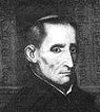 |
|
and polymath. He was born in Madrid of German parents. He studied the classics at the Royal Court, science at the University of Alcalá, and canon law at Salamanca. He joined as a novice the Society of Jesus (Jesuits) in 1614, and subsequently became lecturer on scripture at the Jesuit seminary in Madrid until his death. He studied Greek and Hebrew at the Colegio de Huete, arts and theology at Alcalá, and was ordained in 1623. From 1625 he taught natural history at the Colegio Imperial de Madrid. The Catholic Encyclopedia adds: “At the Colegio Imperial of Madrid he |
taught humanities and natural history for sixteen years and Sacred Scripture for three. As a director of souls he was much sought, being appointed by royal command confessor to the Duchess of Mantua, granddaughter of Philip II. Remarkable for his exemplary life, and the heights of prayer to which he attained, he was an indefatigable worker, and one of the most prolific writers of his time. Seventy-three printed and eleven manuscript works are attributed to him, of these twenty-four at least are in Latin. Though his works are distinguished for their erudition, those in Spanish being characterized according to the theater critic Capmani [Antonio de Capmany y Montpalau], by nobility and purity of diction, terse, well-knit phrases, forcible metaphors, and vivid imagery, certain defects mar his style, at times inelegant and marked by a certain disregard for the rules of grammar and a too pronounced use of antithesis, paronomasia, and other plays upon words. His principal works are: Del Aprecio y Estima de la Divina Gracia (1638), De la Diferencia entre lo Temporal y Eterno (1640), Opera Parthenica (1659), Historia naturae maxime peregrinae Libris XVI, distincta (1635), De la afición y amor de Jesus, De la afición y amor de María (1630), Obras Christianas espirituales y filosóficas (1651), and Obras Christianas (1665), are still extant. It was customary in many of the Spanish churches to read selections from these books every Sunday." He died in Madrid. The genus Nierembergia was published by Hipólito Ruiz López and José Antonio Pavón in 1794.
-
nieuwland'ii: named for Reverend Julius Aloysius Arthur Nieuwland (1878-1936), a Holy Cross priest and professor
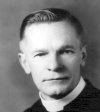 |
|
of botany and chemistry at the University of Notre Dame. He was born in Hansbeke, Belgium, and emigrated to South Bend, Indiana, with his parents in 1880. He enrolled at the University of Notre Dame studying Latin and Greek and received an undergraduate degree in 1899. After studying for the priesthood, he was ordained in 1903. Shifting his focus, he attended graduate school and took botany and chemistry at the Catholic University of America. During his doctoral studies he was the first to synthesize the chemical compound lewisite, a colorless, odorless arsenic-based blistering |
agent similar to mustard gas, named for its inventor Winford Lee Lewis (1878-1943), an American soldier and chemist, who is generally credited with inventing it. His exposure to the newly synthesized compound caused him to be hospitalized for several days. He received his PhD in 1904, following which he returned to Notre Dame where he was professor of botany from 1904 to 1918 and professor of organic chemistry from 1918 to 1936. His researches concerned the chemistry of acetylene which eventually led to the invention of neoprene. In 1909, Nieuwland founded the peer-reviewed journal American Midland Naturalist, acting as its editor until 1934. One of his more famous students was Knute Rockne. He was president of the Indiana Academy of Sciences. In 1996 he was inducted into the National Inventors Hall of Fame, the only Catholic priest to receive this honor. He died at the age of 58.
-
Nigel'la: from the Latin word nigellus, "somewhat black,
dark," a diminutive of niger or nigrum, "black,"
referring to the seed color. The genus Nigella was published by Carl Linnaeus in 1753.
-
nigellifor'mis: having the form of or resembling Nigella.
-
ni'ger: see nigra below.
-
ni'gra/ni'grum: black, referring
to the color of the seeds, from niger or nigrum, "black," possibly the same root as for Negro.
-
nigres'cens: blackish, becoming black.
-
nigrical'ycis: with black calyces.
-
-
nil: Gledhill says that
it is an Arabic name for a species of morning glory, Pharbitis hederacea, a synonym of Ipomoea hederacea. The Online Etymology Dictionary and other sources say that nil derives from the Latin nihil or nihilum, "nothing, not at all, in vain," of uncertain application.
-
nipomen'sis: named for the Nipomo Dunes in sw San Luis Obispo County,
California.
-
nissenan'a: named for the Southern Nissenan tribe of Native Americans
who lived approximately where Sacramento is now.
-
ni'tens: shining, present active participle of niteo, “shine, glitter; thrive.”
-
nit'ida/nit'idum/nit'idus: derived from the Latin
meaning "shining, lustrous, whitish."
-
nitidibacca'tum: from the Latin nitidus, "shining, glittering,"
and bacca, "a small round fruit, berry."
-
Nitro'phila: from the Greek nitron, "carbonate of soda,"
and philos, "fond of," i.e. "alkali- or soda-loving."
The genus Nitrophila was published by Sereno Watson in 1871.
-
niva'le/niva'lis: snow-white, growing near snow. Latin nivale means "snowy."
-
niv'ea/niv'eum/niv'eus: snow-white.
-
nivertia'na: unknown meaning and derivation, apparently named for a French M. Nivert. No current taxon in California has this epithet, but the name Godetia nivertiana is one of many synonyms of Clarkia amoena.
-
niv'ium: from the roots nix or nivis for "snow,"
this is an alternate spelling of niveum, apparently grammatically
different from niveum, but conveying the same meaning, that is, "snow,
snowy, of snow or belonging to snow." David Hollombe dug up the
fact that the type locality for this taxon was Snow Mountain in Lake
County east of Mendocino.
-
nivo'sa: snow-white.
-
no'bile: notable, from the Latin nobilis, meaning "honourable."
-
noblea'na: named for Charles Noble (1817-1908), a British botanist who founded the Sunningdale Nursery and was an early rhododendron hybridist. Little is known about his early life but he entered into a partnership with John Standish in 1847, who had begun a nursery at Bagshot. The following year Robert Fortune set out for China on an expedition the primary purpose of which was to introduce the tea plant to India. Through John Lindley’s influence, Standish and Noble were chosen to be the ones to receive the shipments of seedlings from Fortune. This was quite a coup because the duo were only in their early 30s. In 1850 they published on the hybridization of rhododendrons and by 1853 they had a remarkable number of hardy plants offered in a advertisement in the Gardeners’ Chronicle. The partnership dissolved in 1856 and Noble established his own nursery near Sunningdale station. A website called English Country Gardens Cumbria provides this: "Charles Noble was born in Bromham, near Bedford in the UK, in 1817 and followed in his father’s footsteps, also Charles, as a gardener. In 1846 in partnership with John Standish he founded ‘Sunningdale Nursery’ near Bagshot, Surrey. Both men were well regarded and also sold plants collected by John Fortune from his China expedition between 1843-1846. After Noble had split up with Standish in 1856 he went on to introduce many Clematis hybrids from ‘Noble’s Nursery’, Sunningdale, crossing C. ‘Standishii’ with C. ‘Fortunei’ and various forms of C. patens. From this later period comes Clematis ‘Miss Bateman’ named after Miss Katharine Bateman daughter of James Bateman (1811-1897) renowned orchid grower, celebrated botanist, creator of Biddulph Grange gardens and Vice-President of the Royal Horticultural Society." Another note was found on the website Clematis on the Web: "Charles Noble is described as a difficult man with an uncertain temper. Apparently customers were quite often the victim of his bullying ways. He did not always see eye to eye with Standish who was a mild mannered individual. Noble retired in 1898 and disappeared into obscurity."
-
nobsia'na: named for Malcolm Anthony Nobs (1916-1992), an American botanist and specialist on the Asteraceae. UC Berkeley has this brief note about him: “Malcolm A. Nobs, plant biologist at the Carnegie Institution of Plant Biology at Stanford, was born in 1916. He received his bachelor's degree in botany from Stanford in 1939 and his PhD in botany from the University of California at Berkeley in 1957. He was hired as a research assistant at the Carnegie Institution in 1951, became a staff member in 1960, and continued as an emeritus staff member after retiring in 1981. He served in the army during WWII. He died in Portola Valley in 1992.” No furthern information available. The taxon Bacopa nobsiana is a synonym for the naturalized plant Bacopa rotundifolia.
-
Noccae'a: named for the Italian botanist Domenico Nocca (1758-1841), a clergyman and professor of botany at the University of Pavia, also director of the botanic garden there from 1797 to 1826. He had previously been director of the botanical garden of Mantua until 1797. While at the University of Pavia, about 20,000 species of plants were grown in the botanical garden and he exchanged seeds and plants with other well-known botanists of the day. Beginning in 1802 he took over the chair of the department of botany. Having decided upon a survey of the flora of the Pavia region, he enlisted the help of the Italian politician, doctor and botanist Giovanni Battista Balbis in classifying the species, and their work was published in two volumes in 1816 and 1821 with the title of Flora Ticinensis. He was also the author of Ticinensis Horti Academici Plantae selectae (1800), Elements of botany (1805), Onomatologia (1813) and Historia atque Iconographia Horti Botanici Ticinensis (1818). There have been two genera named Noccaea, one in the Brassicaceae (the one in California) published by Conrad Moench in 1802, and the other in the Asteraceae published in 1891 by Carl Ernst Otto Kuntze
-
noctiflor'a: night-flowering, from the Latin noctis, "night."
-
nodiflor'a/nodiflor'um: with flowers borne
from the nodes. The single taxon in California is Phyla nodiflora.
-
nodo'sa/nodo'sum/nodo'sus:
with conspicuous nodes, from Latin nodosus, "knotty."
-
nodulo'sa: from the latin word nodulosa meaning "a small knot or small nodule," alluding to a knobby surface.
-
noldek'eae: named for Anita Matilda Noldeke (1891-1983), plant collector and active member of the California Botanical Club born and died in San Francisco. Her father was German and her mother Swiss. She is listed as a music teacher in 1920. She sent many valuable specimens of plants collected in Mono County 1937-1938 to the California Academy of Sciences where she was a part-time assistant in the Academy herbarium. Among these were the type specimen of Lupinus noldekae collected near Hot Creek. In the description it says “The Herbarium of the California Academy of Sciences is indebted to Miss Noldeke for many specimens from that little-known region of Mono County. It is a pleasure to name this lupine in her honor.”
-
Noli'na: named for Abbé Pierre Charles Nolin (1717-1795), a French arboriculturist, director of the royal nurseries, and agricultural writer who co-authored a treatise on farming around 1755. In the 1750s he was in Paris at the convent of Saint Marcel, of which he was a canon. He cultivated a garden of exotic plants and edited a catalog which was entitled Essai sur l'agricolture moderne. He apparently leaned more in favor of English style gardens rather than French ones, and he advocated for the introduction into France of trees and shrubs, especially North American ones, that would be appropriate for a continental climate. He demonstrated considerable expertise in the field of fruit trees and general arboriculture. In the 1760s he was appointed as director of royal nurseries and exhibited remarkable administrative talent. He was granted two lodgings in the nurseries themselves, one in Versailles and one in Paris, and in that latter one he maintained a cabinet of natural curiosities which was available for anyone to see and study, his collection of shells being particularly extensive. He held the post for some 30 years, first under King Louis XV and then under Louis XVI, was involved in the planting of the park at Versailles in 1774-1775, and helped to organize the Michaux expedition to the United States. The genus Nolina was published by André Michaux in 1803.
-
no'li-tang'ere: from the Latin noli, "do not," and tango, "to touch,"
and thus meaning "touch-me-not"
which is a general common name for the Impatiens.
-
nootkaten'sis: of or from the area of Nootka Sound on the west coast of Vancouver Island. The single taxon in California is Callitropsis nootkatensis.
-
norris'ii: named for American botanist Daniel Howard Norris (1933-2017). He was awarded a BS degree in botany
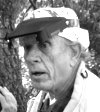 |
|
from Michigan State University in 1954 and a PhD in botany from the University of Tennessee in 1964. In 1967 he became a professor of botany at Humboldt State University. Between 1984 and 1985 he was a Fulbright research scholar at the University of Helsinki, and in 1990 he was awarded with an honorary PhD from that institution. In 1991 he transferred his bryological collection to the University of California, Berkeley to continue his research. For two decades he held the position of curator of bryophytes at UC Berkeley. All together he collected about 116,000 bryophyte |
specimens mainly from California and Papua New Guinea but from every continent except Antarctica including four moss genera new to science. He died after a long period of being debilitated by Parkinson's disease. ( Didymodon norrisii, Orthotrichum norrisii, Racomitrium norrisii) (Photo credit: UC Berkeley)
-
norris'ii: named for Larry L. Norris (1949- ). The following is from
"Notes on Contributors" (Fremontia, January, 1984):
"Larry L. Norris is a research botanist with the National Park
Service in Sequoia and Kings Canyon National Parks. He was formerly
a naturalist in Death Valley National Monument, and compiled a plant
checklist for the area. He also compiled a plant list for Sequoia/Kings
Canyon, and bird checklists for both areas. He is still with the National
Park Service and is currently Desert Southwest Cooperative Ecosystem
Studies Unit Research Coordinator, based at the University of Arizona
in Tucson." (Mimulus norrisii)
-
norten'sis: of or from Del Norte County. Arctostaphylos nortensis is called the Del Norte manzanita and another California species from Del Norte County is butterwort, Pinguicula macroceras ssp. nortensis.
-
nortonia'na: named for John Bitting Smith Norton (1872-1966), a botanist, taxonomist and mycologist. He was born
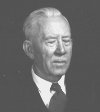 |
|
in Tennessee and relocated to Kansas in the late 1890s. He was trained at Kansas State Agricultural College (now Kansas State University) by agrostologist Albert S. Hitchcock and received a BS 1896 and an MS in 1901. From 1894 to 1896 he worked as plant pathologist and an assistant professor at the Agricultural Experiment Station, and from 1896 to 1901 as a botanical assistant at the Missouri Botanical Garden in St. Louis, Missouri. He moved east in 1901 and arrived at the Maryland Agricultural College, assuming a position with the Maryland Agricultural Experiment |
Station and the department of botany. He was appointed state plant pathologist responsible for experimentation, botanical surveying, gathering and disseminating information, and instruction, and established the Norton-Brown Herbarium at the University of Maryland, College Park. In 1912 he began researching tomato species for disease resistance, and in 1917 he produced the ‘Norton’ tomato, which became one of the leading disease resistant tomato varieties, especially in the eastern tomato growing regions, for some years. He resigned from the state pathologist position in 1914 to devote all his time to teaching and other duties at the experiment station. He was the author of numerous publications and articles for magazines, newsletters and Bailey's Cyclopedia of American Horticulture, and was a member of many horticultural societies. He also served as secretary-treasurer of the Maryland Horticultural Society. He received an honorary doctor of science degree from the University of Maryland in 1923 and retired from teaching in 1942, holding the title of professor emeritus until his death. After his retirement, Norton grew dahlias for sale and show at his Hyattsville home under the name Norton Gardens. (Photo credit: SaveSeeds.org)
-
norton'ii: named for Andrea Massena Norton (1853-1930), a California
plant collector who found a number of plants that were named by Edward L.
Greene. He was born at Lanesboro, Susquehanna County, Pennsylvania. He taught school at Gonzales from 1880 to about 1892 and was on the county board of education. Later
he was a steamship company agent at Monterey. He learned botany from
his friend and colleague John Bale Hickman. A very restricted Eriogonum of the Pinnacles region and Chorizanthe nortonii were two of his botanical discoveries.
-
norveg'ica: of or from Norway.
-
nota'tior: may be a variant of notatus, "marked, spotted,
distinguished," and the -ior ending may connote some extension
of an adjectival characteristic, like brevior, "shorter"
or latior, "broader," which might give this the meaning
of "more marked."
-
nota'tum/nota'tus: marked, spotted, from Latin noto, "to note or observe."
-
Nothocala'is: from the Greek nothos, "false or spurious,"
and Calais, a figure of Greek mythology who had scales on his back.
The genus Nothocalais was published by Edward Lee Greene in 1886.
-
Nothochelo'ne: false Chelone. The genus Nothochelone was published by Richard M. Straw in 1966.
-
nothoful'vus: from the Greek n otho,
a word used to indicate close but not complete agreement, with an
aspect of uncertainty or falseness, and fulvus, "tawny,"
so perhaps meaning something like "almost tawny (?)."
-
Notholae'na: from the Greek nothos, "false," and chlaina, "a cloak," according to Stearn an allusion to the incomplete
indusium. The genus Notholaena was published by Robert Brown in 1810.
-
Notholithocar'pus: from the Greek nothos, "false," and the genus name Lithocarpus. The genus Notholithocarpus was published by Paul S. Manos, Charles H. Cannon and Sang-Hun Oh in 2008.
-
Nothoscor'dum: from the Greek nothos, "false," and scordum, "garlic," the common name being false garlic.
The genus Nothoscordum was published by Karl Sigismund Kunth in 1843.
-
notit'ius: well-known, from notus, "known."
-
notocalifor'nicum: the only thing I can surmise about this name is that it may come from the Greek noto, "southern or southwestern," so "from southern or southwestern California."
-
no'va: new, from Latin novus, "new."
-
nov'ae-zeland'iae: from New Zealand.
-
novenmillen'sis: from the Latin novem, "nine," and millensis presumably from some root meaning "mile," Phacelia novemillensis is named for Nine Mile Canyon on the east slope of the southern Sierra Nevada, Inyo County, California, and is called nine mile canyon phacelia.
-
Nowodwor'skya: named for Johann (Johannes, Joannes) Nowodworsky (1773-1811), a Bohemian physician and botanist, professor at the Academy Gymnasium in Prague, author of Elenchus plantarum quae in horto illustriss. The genus Nowodworskya was published by Jan Svatopluk Presl in 1830.
-
nowosad'ii: named for Frank Samuel Nowosad (1907-1968) of the Agrostology Division, Central Experimental Farm in Ottawa, Canada. He produced numerous publications including "Handbook for northern gardeners," "Annual crops for hay and pasture," "Use of annual forages," "Field roots," "An evaluation of vegetables grown in the eastern arctic region of Canada," "The effect of some commercial fertilizers on the botanical composition and yield of permanent pastures," and others, mostly under the auspices of the Canadian Agriculture Department.
-
nubig'ena/nubig'enum/nubig'enus: born or formed among the clouds, from nubes, “cloud,” and -gena, “born from.”
-
nucif'era: nut-bearing, from the Latin words nux, "nut," and fera, "bearing."
-
nu'da: naked, bare, from nudus, "naked, unclothed."
-
nuda'ta/nuda'tus: see nuda above.
-
nudicau'le/nudicau'lis: with a bare stem.
-
nudiflor'um/nudiflor'us: flowering before the leaves emerge.
-
nudius'cula: somewhat bare or naked.
-
-
nummular'e: same as next entry.
-
nummular'ia: resembling a coin, nummus, often applied to
plants with small, almost circular leaves.
-
Nu'phar: ultimately derived from the Arabic ninufar and the Persian nufar which is a name for a water lily. Nufar was also an ancient Sumerian settlement whose ruins lie at Nuffar in modern Iraq. Under various names it persisted as a settlement throughout the periods of Greek and Roman engagement in Babylonia. The genus Nuphar was published by James Edward Smith in 1809.
-
nu'tans: nodding or drooping, usually the flowers, from the Latin nutans, "nodding."
-
nutkaen'sis: see following entry.
-
nutka'na: of Nootka Sound on the west coast of Vancouver Island, British Columbia.
-
Nuttall'anthus: see entry below. The genus Nuttallanthus was published by David Andrew Sutton in 1988.
-
Nuttal'lia: see entry below.
-
nuttall'iana/nuttallia'num/nuttallia'nus/nuttall'ii: named for the Englishman Thomas Nuttall (1786-1859), a botanist,
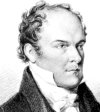 |
|
ornithologist, zoologist, curator of the Harvard Botanic Gardens, and author in 1816 of The Genera of North American Plants. In 1834 he ventured overland to Oregon with his friend Nathaniel Wyeth (see Wyethia), sailed twice to Hawaii, then visited California where he was recognized by a Harvard student who had taken up a seafaring life, Richard Henry Dana, and who described Nuttall in Two Years Before the Mast. Although not well known in his native country, he was highly praised by the famed American botanist Asa Gray. He was born in Settle in the Yorkshire Dales |
region of England, grew up in Blackburn, Lancashire, and spent some years as an apprentice printer for his uncle in Liverpool before going to London and then leaving for the United States at the age of 22, settling in Philadelphia where he met and first began to study botany with Professor Benjamin Smith Barton. He appears to have had little in the way of formal education but was clearly a man of intellect. He made trips through Virginia, North Carolina, Missouri, Arkansas and the Great Lakes region collecting plants and identifying species. In 1811, being concerned about the threat of war between his native country and the United States, he went back to England to organize and curate the many specimens he had collected, returning to the US in 1814. From 1818 to 1820 he travelled along the Arkansas and Red Rivers, finally returning to Philadelphia and publishing his Journal of Travels into the Arkansas Territory during the year 1819. His Genera of North American Plants appeared in 1818 and was based on the collections he made on these trips. He became a lecturer in natural history at Harvard University in 1822 and it was then that he became interested in ornithology. He was elected an associate fellow of the American Academy of Arts and Sciences in 1823 and became curator of the botanical gardens at Harvard University in 1825. The first volume of his Manual of the Ornithology of the United States and of Canada appeared in 1832. Wikipedia says: “In 1834 he resigned his post and set off west again on an expedition led by Nathaniel Jarvis Wyeth, this time accompanied by the naturalist John Kirk Townsend. They travelled through Kansas, Wyoming and Utah, and then down the Snake River to the Columbia. Nuttall then sailed across the Pacific Ocean to the Hawaiian Islands in December. He returned in the spring of 1835 and spent the next year botanizing in the Pacific northwest, an area already covered by David Douglas. On the Pacific coast, Nuttall heard of the ship Alert leaving San Diego in May 1836 and bound for Boston. It is here that he miraculously encountered Richard Henry Dana Jr., a former student of his at Harvard who had set sail from Boston on a two-year voyage to the California coast at about the same time that Nuttall had begun his expedition. Dana writes in his Two Years Before the Mast of his amazement at seeing his old professor 'strolling about San Diego beach, in a sailor's pea jacket, with a wide straw hat, and barefooted, with his trousers rolled up to his knees, picking up stones and shells.' Nuttall was taken on the Alert as a passenger along with many of his flora and fauna specimens which he brought back to Boston to be cataloged and preserved for posterity. Dana writes that he had some occasions to speak with Nuttall about his botanizing while Dana was at the helm of the ship 'on a calm night' and was amused to hear his fellow shipmates refer to Nuttall as 'Old Curious' for all the curiosities he conveyed on board.” He worked at the Academy of Natural Sciences in Philadelphia from 1836 to 1841, making contributions to Asa Gray and John Torrey’s Flora of North America. He left America in 1841 and made only one more visit to the United States in 1847 and 1848. He lived in Lancashire until his death.
-
Nyctagina'ceae: from the Greek nyx or nyktos, "night," and New Latin -ago, a suffix that implies resemblance to the word that precedes it, this family name is based on the generic epithet Nyctago.
-
nyctagin'ea: night-blooming.
-
nyctaginifo'lia: with leaves like those of the four-o'clock family, Nyctaginaceae.
-
nyen'sis: probably for Nye County in southern Nevada where Astragalus nyensis was found.
-
nyman'ii: named for Carl Fredrik Nyman (1820-1893), a Swedish botanist born in Stockholm. From 1855 to 1899 he was the curator of the botanical department and herbarium of the Naturhistorika Riksmuseum (the Swedish Museum of Natural History). He was a co-editor of Analecta Botanica, and published a number of books including Conspectus Florae Europaeae, Sylloge florae europaeae, Synopsis plantarum bicornium europaearum, and several others. He had two genera named in his honor.
-
Nymphae'a: from the Greek nymphaia, referring to a water nymph, which is appropriate because Nymphaea is a genus of aquatic plants.
In Greek mythology, the nymphs were generally regarded as personifications of nature typically tied to a specific place or landform, and are usually depicted as maidens. They were not necessarily immortal, but lived much longer than human beings. The genus Nymphaea was published in 1753 by Carl Linnaeus who was found of taking names from mythology.
-
Nympho'ides: like genus Nymphaea. The genus Nymphoides was published by Jean François Séguier in 1754.
|









